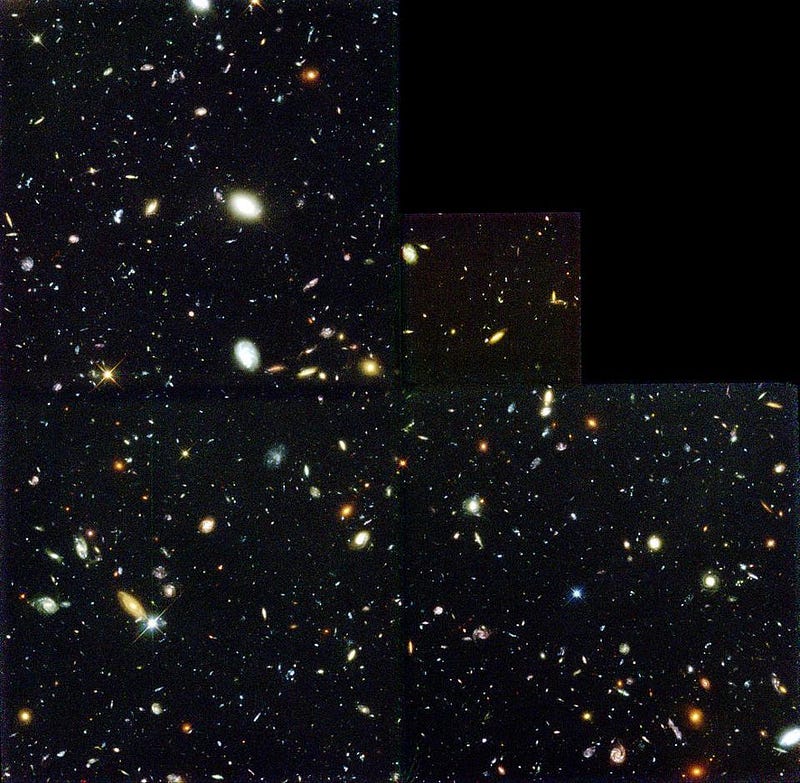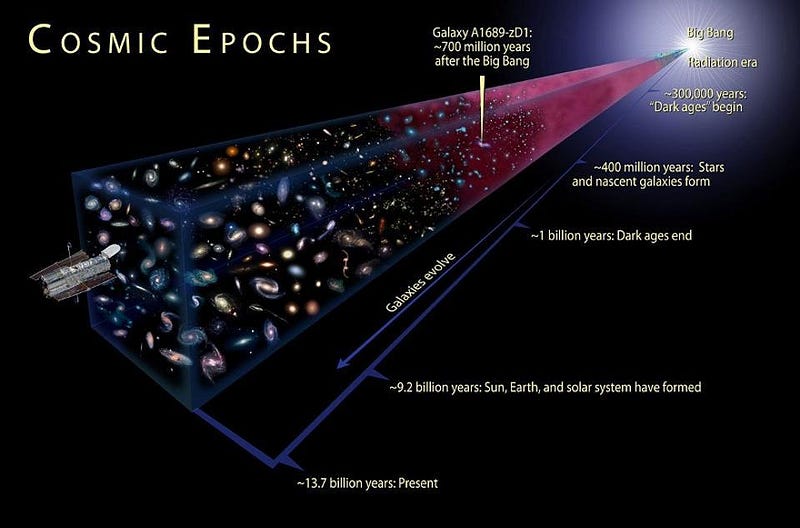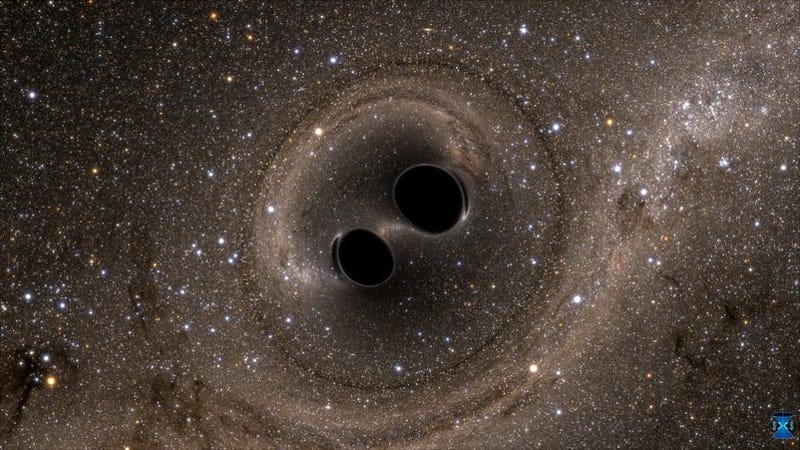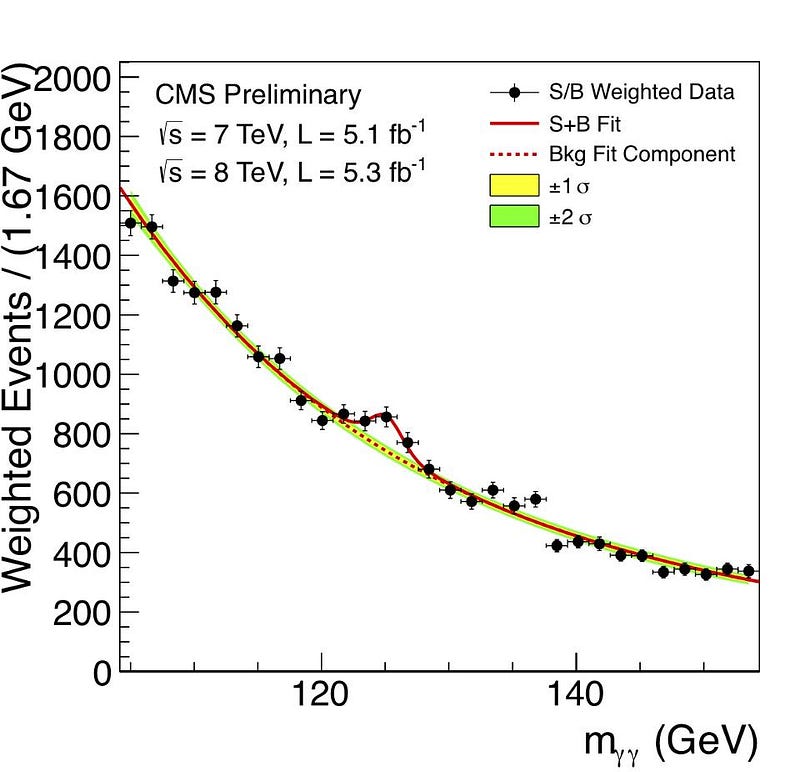Successfully predicting the future requires theoretical science

It isn’t just a theory; it’s the best way we have to make sense of everything that exists.
“The physicist is like someone who’s watching people playing chess and, after watching a few games, he may have worked out what the moves in the game are. But understanding the rules is just a trivial preliminary on the long route from being a novice to being a grand master. So even if we understand all the laws of physics, then exploring their consequences in the everyday world where complex structures can exist is a far more daunting task, and that’s an inexhaustible one I’m sure.” –Martin Rees
In 1993, the Hubble Space Telescope had just been serviced, repaired, and upgraded, and was finally taking the incredible images it was designed for. From planets to stars to nebulae and galaxies, at last the deepest secrets of the Universe were yielding to our newfound observational power. Yet there was a great frontier that was predicted to exist, but had never been explored: the deep, distant Universe beyond what any telescope had ever seen. A very ambitious proposal sought to image a completely blank patch of sky — one with no known stars, galaxies, or matter in it — for many days on end. In a very controversial decision, the telescope’s director granted 11 days of observing time to this proposal, with the observations occurring in December of 1995. The result, the Hubble Deep Field, revolutionized our view of the Universe.

Although many astronomers feared it would be a total waste of valuable observing time, and that nothing at all would show up in this image, theoretical astrophysicists knew these objects must be there. They knew how abundant they should be, how bright they should be, and how many of them should show up given the observing power of Hubble. When all was said and done, more than 3,000 galaxies showed up in this classic image, confirming and validating our picture of the Universe. The Big Bang, General Relativity, the formation of large-scale structure, and the star-formation history of the Universe were all in agreement with what we saw.

This was no surprise! Nor was it serendipity, good fortune, or a mere coincidence. Thanks to some very high-quality theoretical work, we knew exactly what we ought to see before we ever made the observations. This is the greatest power of theoretical science: to predict what we ought to see, encounter, or experience in completely unfamiliar situations. The reason we can do this successfully when all other avenues have failed is because of the scientific framework that’s painstakingly been put in place due to the work of generations of scientists to come beforehand.

If you find yourself in a new situation, one that perhaps no one has ever been in before, you’re not completely in the dark. So long as the fundamental laws governing the Universe are with you, and so long as you can identify the important, relevant forces at play on your system, you have an opportunity to successfully thread your way through the pitfalls, and understand how the system is going to behave. When we detected merging black holes for the first time, it was our knowledge of General Relativity and our understanding of how inspiraling masses ought to behave that led to us successfully predicting what the signal would look like, even though we had never seen one before.

When we collide high-energy particles at never-before-attained energies, we know exactly what the cross-sections, scattering amplitudes, branching ratios, and decay products of everything produced in a collision ought to be. If there’s any deviation, that’s evidence for new physics, additional particles, or an extension to the Standard Model. The reason we’re able to perform such intricate scientific experiments and learn so much about the Universe at the LHC isn’t simply because we’re slamming things together at such incredibly high energies; it’s because we understand the physics governing these particles and their interactions at a wide variety of energies, and can extrapolate into the unknown regime. When something new shows itself, we’re ready.

This doesn’t merely apply to physics, but to any scientific situation. If you can correctly identify the important laws and rules that govern your system, and model your initial conditions correctly, you should be able to predict how your system will behave in any situation you can encounter, even if it’s a situation you’ve never encountered before. This applies to chemistry, biology, atmospheric science, geology, and many other branches of physical, life, and (sometimes) even social sciences. It’s only when an important, relevant effect is left out of your theoretical model that your predictions fail to align with what actually comes about.

In science, as in all things, not knowing everything doesn’t mean that there’s nothing valid about what we already know. Instead, the failure of a theory to accurately predict what’s going to happen in a given situation is often an omen of advancing our understanding, where the door is open for the creation of a better model in the future. What we already know is important, substantial, and provides the foundation for predicting what comes next. If you want to know what’s going to happen in the future, looking to the predictions of our best scientific theories are far and away the most successful pathway humanity has ever discovered. It only gets better from here.
Ethan Siegel is the author of Beyond the Galaxy and Treknology. You can pre-order his third book, currently in development: the Encyclopaedia Cosmologica.





